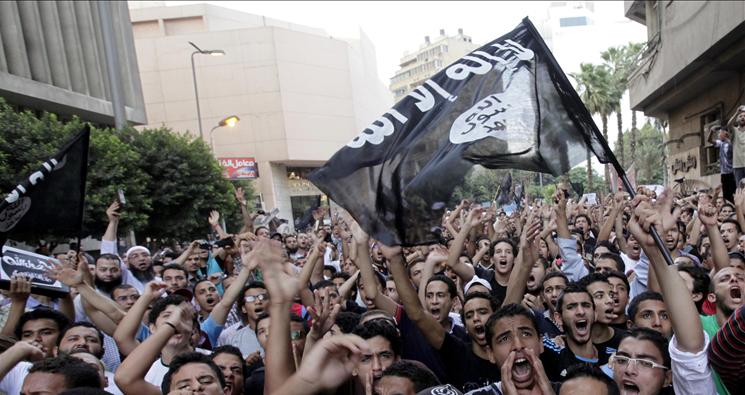When the Black Flags Fly
I’ll never forget the first time I saw the black flags. It was April, 2008, and I was in a three-vehicle convoy driving through the city of Balad Ruz on our main supply route. I’d been on the route many times before and had seen only the hustle and bustle of a small Arab city. But this time was different. The streets were empty — with little traffic and almost no pedestrians — and the black flags were flying. Everywhere.
We knew what that meant. In our region, at least, Muqtada al-Sadr’s truce was over.
I made it back to our base without incident, but the demonstrations and attacks came fast and furious. An EFP (explosively formed penetrator), the signature weapon of Shiite insurgents, destroyed a Humvee, killing two members of our armored cavalry squadron and wounding two more. The next day, another EFP hit a Stryker, seriously wounding four soldiers from a neighboring unit. Both EFPs detonated on our main supply route. As the Shiite insurgents attacked to our west and south, the Sunni al Qaeda strongholds to our north tried to capitalize. Just north of our base, a faked insurgent surrender turned into an 36-hour engagement between our Fox Troop and multiple insurgent cells. As our Quick Reaction Force reinforced Fox Troop, they were ambushed up and down the length of the road north. East of our base, more than a 1,000 protestors jammed the streets of a nearby town.
With EFPs on our supply route, firefights raging to our north, and demonstrations roiling area towns, our entire effort in Diyala Province hung in the balance. But the response was focused and decisive. Fox Troop continued its battle with al Qaeda in the north while our Grim Troop rolled in full force straight into the heart of Balad Ruz and in a bold daylight operation captured the leader of the Shiite insurgency and his entire “security detail” without firing a shot. Almost immediately, the black flags came down, the EFPs disappeared, and our supply routes re-opened. Our fight with al Qaeda continued, but the Shiite “uprising” was over.
Why relate that story? After all, while a matter of life and death to those of us on the ground, it was hardly the decisive battle of the Iraq War — or even one that will be recorded in the history books. But I learned lessons that I’ll never forget. First, jihadists need no real excuse to riot or attack. In this case, “Mullah Playstation” (the area nickname for al-Sadr based on his reputed love for console gaming) simply ordered his people into the streets. Second, even “mass” movements require leadership. When we captured the local leaders, the movement ended as abruptly as it began. Third — and I’ll repeat this point as long as it needs to be said — strength wins and weakness kills. The local population didn’t love Sadr’s militia so much as they wanted to be on the winning side. Had we pulled back or hesitated in the slightest, our little corner of the war could have turned out very differently.
We do not know what is happening behind closed doors (where the administration’s talk and actions may be much tougher than we currently perceive), but the parade of public American condemnations for an asinine YouTube are ineffectual at best and counterproductive at worst. Some jihadists in fact will view the condemnations as proof of their power and influence over American leaders. They had their moments on September 11 and September 12. They need to soon experience a decisive American response.
